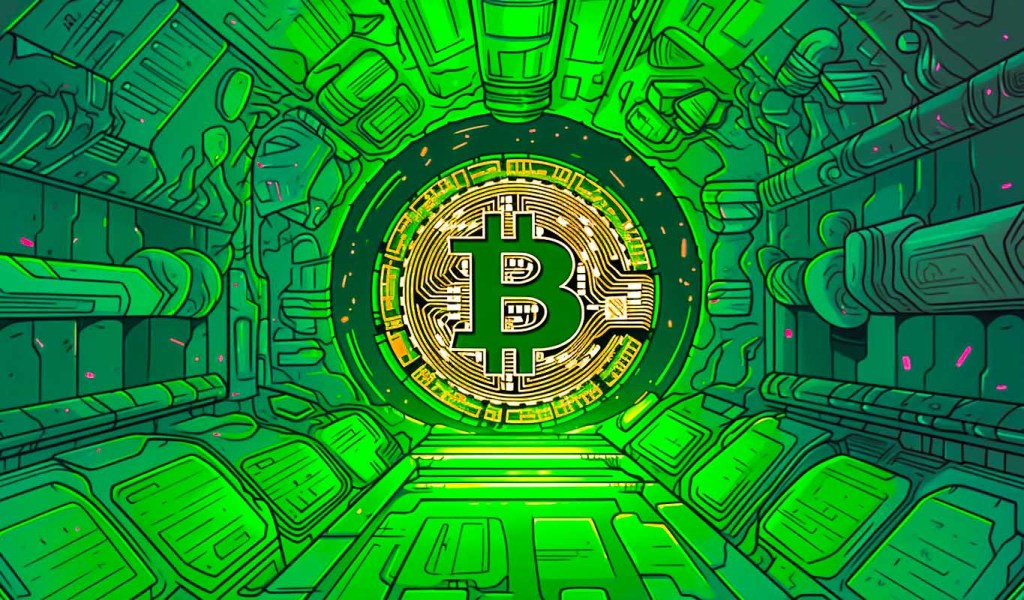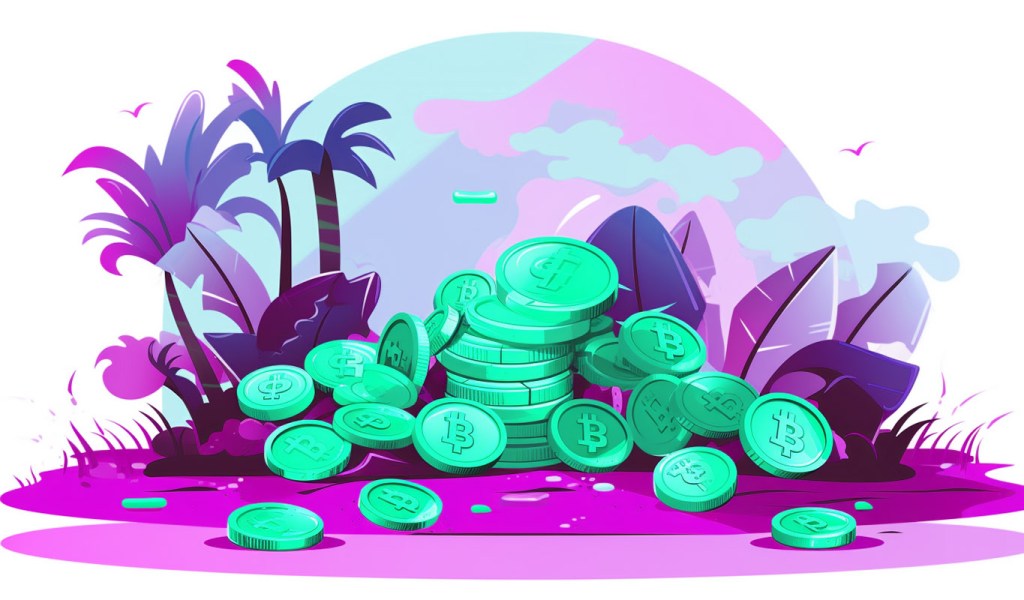
Bitcoin (BTC) is priming itself for a big move to the upside even amid higher-than-expected inflation data that came in last week, the founders of Glassnode say. According to Glassnode founders Jan Happel and Yann Allemann, Bitcoin has reclaimed the $26,000 level as support, and BTC’s Risk Signal appears to have taken a nosedive. BTC’s […]
The post Unexpected Explosive Bitcoin Rally in the Cards As BTC Rides Hot Inflation Data: Glassnode Founders appeared first on The Daily Hodl.

The co-founders of the crypto analytics platform Glassnode say Bitcoin (BTC) is at an important inflection point. Jan Happel and Yann Allemann tell their 56,600 followers on the social media platform X that a BTC accumulation phase is underway, with a big move on the horizon. “Navigating the Directionless. BTC’s price resurgence finds equilibrium at […]
The post Traders Should Brace for ‘Decisive Move’ As Bitcoin Undergoes Savvy Accumulation Phase: Glassnode Co-Founders appeared first on The Daily Hodl.

Analytics firm Glassnode says signals are suggesting that the initial optimism surrounding digital asset manager Grayscale’s victory over the U.S. Securities and Exchange Commission (SEC) has waned, taming investors’ risk appetite. Last week, a federal judge ruled that the SEC has to reconsider Grayscale’s application to launch exchange-traded fund based on Bitcoin Trust. While crypto […]
The post Investors Turn Hesitant on Crypto After Grayscale Victory Optimism Fades Away: Analytics Firm Glassnode appeared first on The Daily Hodl.

New data reveals that deep-pocketed Bitcoin (BTC) holders have suddenly accumulated over a billion dollars worth of the crypto king during the last two weeks. According to market intelligence platform IntoTheBlock, large Bitcoin holders have amassed big quantities of the top digital asset by market cap since the middle of August. “Addresses holding 0.1% of […]
The post Large Bitcoin Holders Abruptly Accumulate $1,500,000,000 in BTC in Just Two Weeks, According to IntoTheBlock appeared first on The Daily Hodl.

The co-founders of the crypto analytics firm Glassnode think Bitcoin (BTC) could have a strong performance next month. Glassnode co-founders Jan Happel and Yann Allemann, who share the Negentropic handle on the social media platform X, say that Bitcoin’s momentum indicator, the relative strength index (RSI), is flashing bullish for the king crypto heading into […]
The post Glassnode Co-Founders Say September Could ‘Bring Good News’ for Bitcoin – But There’s a Catch appeared first on The Daily Hodl.

The co-founders of the crypto analytics firm Glassnode think Bitcoin (BTC) could soar toward a new all-time high faster than many analysts and traders expect. Glassnode co-founders Jan Happel and Yann Allemann, who share the Negentropic handle on the social media platform X, predict that the US dollar index (DXY) will peak at 106. The […]
The post Glassnode Founders Predict Bitcoin Will ‘Soar’ to New Highs Sooner Than Expected – Here’s Their Target appeared first on The Daily Hodl.

Traders believe that Bitcoin’s low volatility is a bull market signal, but their bias could be preventing them from acknowledging potentially negative macro outcomes.
The latest report from Glassnode Insights, titled "The Week On-Chain," emphasized that Bitcoin (BTC) has reached historically low levels of volatility. This has led to a mere 2.9% separation between the asset's Bollinger Bands, indicating an exceptionally narrow trading range.
This situation has only been observed twice in Bitcoin's history: in September 2016, when BTC traded near $604, and in January 2023, when the asset maintained a steady value of $16,800.
As outlined in the report, periods of reduced volatility, combined with investor fatigue, prompt the movement of coins based on their cost close to the current price. This implies that traders are likely making marginal profits or losses with their exits. The report concludes that establishing a new price range is necessary to stimulate fresh spending, potentially contributing to an anticipated increase in volatility.
The constrained range within which Bitcoin has traded – specifically, $29,050 to $29,775 over the past three weeks – is atypical and it does not require advanced mathematical analysis to understand. This has resulted in an exceptionally low annualized 30-day volatility of 17%. The key question is whether this trend is isolated to cryptocurrencies, or if it's a phenomenon also observed in the traditional markets, including stocks, oil, bonds and currencies.

Notice how the S&P 500 and oil price (WTI) 30-day volatility are currently at their lowest levels since November 2021. Interestingly, the DXY index didn't follow this trend, as the metric rose to 8% from 6% in May 2023. Additionally, the 10-year Treasury yield recently rose from its 18-month low of around 10% to the current 16%. These trends could have potentially influenced the decrease in Bitcoin's volatility.
According to Glassnode, there's a significant concentration of short-term holders' price distribution between $25,000 and $31,000. This pattern is reminiscent of similar periods during past bear market recoveries. However, the data shows that many of these investors are still holding positions with losses, creating short-term selling pressure.

Moreover, the analytics firm highlights a noteworthy drop in short-term holder supply to a multi-year low of 2.56 million BTC. On the flip side, the supply held by long-term holders has reached an all-time high of 14.6 million BTC, as mentioned in the report.

Assuming a relatively optimistic scenario where only 10% of the 1.77 million BTC held by long-term investors at $47,000 or higher change their positions before Bitcoin surpasses $40,000, this amounts to about 6 and a half months of the current mining output. This illustrates the importance of not disregarding the potential impact of a global economic recession on Bitcoin's price, beyond the fact that short-term holders are becoming scarce.
This hypothesis doesn't invalidate Glassnode’s idea of increased positions by "long-term conviction holders." Nevertheless, no historical data can account for the U.S. 10-year Treasury yields nearing their highest level in 16 years or the 30-year fixed average mortgage rate in the U.S. flirting with the 7% mark.
Despite the current trend, long-term holders still could flip their sentiment and actions in the advent of adverse economic conditions.
Higher yields in equities could attract investors, leading to possible volatility, while rising government and corporate borrowing costs might strain budgets and profitability. Concurrently, real estate markets might slow due to the impact on mortgage affordability. Such circumstances would likely compel central banks to implement fiscal policies to support economic activity, often resulting in upward inflation pressure.
Bitcoin's ascension as a $50 billion asset class occurred merely 6 years ago, making it uncertain how holders will react to the stress faced by some traditional markets. This contradicts the historically low volatility in the S&P 500, oil and Bitcoin markets.
This raises the question: could this tranquility be preceding a period of turmoil and will Bitcoin serve as a hedge against escalating inflation? Only time will provide the answers.
This article is for general information purposes and is not intended to be and should not be taken as legal or investment advice. The views, thoughts, and opinions expressed here are the author’s alone and do not necessarily reflect or represent the views and opinions of Cointelegraph.

The co-founders of the crypto analytics platform Glassnode are forecasting that one catalyst could kickstart Bitcoin’s (BTC) next rally. Glassnode co-founders Jan Happel and Yann Allemann, who share the Negentropic handle, tell their 55,900 X followers that if the Relative Strength Index (RSI) indicator falls below 37, it could trigger a BTC rally. The RSI […]
The post One Catalyst Could Trigger the Next Upward Move for Bitcoin, Predicts Glassnode Co-Founders appeared first on The Daily Hodl.

Two coins from the Ethereum (ETH) ecosystem are leading the charge of a new resurgence in decentralized finance (DeFi), according to blockchain analytics firm Glassnode. In a new report, Glassnode says that its DeFi index, which consists of the eight largest DeFi tokens by market cap, has outperformed Ethereum over the last two months for […]
The post Two Ethereum Altcoins Leading New Resurgence of DeFi, According to Glassnode appeared first on The Daily Hodl.

Even with a price correction to $29,000, several Bitcoin price metrics show traders casting bets on a quick rebound.
On July 24, Bitcoin (BTC) experienced a flash crash, plummeting to $29,000 in a movement now attributed to significant BTC holders potentially liquidating their positions.
Amidst the crash and market uncertainty, Bitcoin's three major trading metrics continue to project a bullish outlook, signifying that professional traders have not reduced their leverage longs through the use of margin and derivatives.
Analytics firm Glassnode reported a surge in whales' inflow to exchanges, reaching its highest level in over three years at 41% of the total. This forceful sell-off from whales alarmed investors, especially in light of the absence of any significant negative events impacting Bitcoin in the past month.
Notably, a major concern stems from the ongoing court cases by the U.S. Securities and Exchange Commission (SEC) against leading exchanges, Binance and Coinbase. Still, there hasn’t been any major advancement on those cases, which will likely take years to settle.
Despite historical volatility, Bitcoin’s crash became more pronounced following 33 consecutive days of trading within a tight 5.7% daily range. The movement is further accentuated by the S&P 500 gaining 0.4%, crude oil rising by 2.4%, and the MSCI China stock market index surging by 2.2%.
However, it is essential to consider that the world's largest global reserve asset, gold, experienced a dip of 0.5% on July 24. Furthermore, the dollar strength index (DXY) reversed its two-month-long trend of devaluation against competing fiat currencies, climbing from 99.7 to 101.4 between July 18 and July 24.

The DXY index measures the strength of the U.S. dollar against a basket of foreign currencies, including the U.K. Pound, Euro, Japanese Yen, Swiss Franc and others. If investors believe that the U.S. Fed will manage a soft landing successfully, it makes sense to reduce exposure to gold and Bitcoin while increasing positions in the stock market. Lower odds of a recession can positively impact corporate earnings.
To understand whether Bitcoin’s price move down to $29,000 has successfully ruptured the market structure, one should analyze margin and derivatives markets. Margin trading allows investors to leverage their positions by borrowing stablecoins and using the proceeds to buy more cryptocurrency.

The margin lending of OKX traders based on the stablecoin/BTC ratio rose between July 22 and July 24, suggesting that professional traders added leveraged long positions despite the recent price crash.
Traders should corroborate this data with derivatives to ensure its market-wide impact. In healthy markets, BTC futures contracts typically trade at a 5 to 10% annualized premium, known as contango, which is not exclusive to crypto.

Notice how the indicator sustained a healthy 5.7% average annualized premium, slightly lower than two days prior but still within the neutral range. This data confirms the resilience of margin markets, but to gauge market sentiment further it’s also helpful to look at the options markets.
The 25% delta skew can reveal when arbitrage desks and market makers charge higher prices for protection against upside or downside movements. In short, a skew metric rising above 7% suggests traders anticipate a drop in Bitcoin's price, while periods of excitement generally yield a negative 7% skew.

The 25% delta skew remained negative, indicating that bullish call options were trading at a premium compared to protective puts. This further supports the thesis that professional traders remain unfazed by the flash crash, with no evidence indicating pessimism among whales and market makers.
All factors considered, irrespective of the rationale behind the price move on July 24, Bitcoin bears could not dampen investor optimism, resulting in higher odds of a recovery above $30,000 in the short term. Notably, the mere appreciation of the U.S. dollar does not impact Bitcoin's predictable monetary policy, censorship resistance and autonomous nature as a means of payment.
On the brighter side, there are some positive triggers on the horizon, including the possible approval of a spot Bitcoin ETF and gaining regulatory clarity. Proof of this comes from a recent U.S. bill introduced on July 20 that seeks to establish a clear process for determining the classification of digital assets as commodities or securities. If the bill becomes law, it would give the Commodity Futures Trading Commission (CFTC) authority over digital commodities.
This article is for general information purposes and is not intended to be and should not be taken as legal or investment advice. The views, thoughts, and opinions expressed here are the author’s alone and do not necessarily reflect or represent the views and opinions of Cointelegraph.